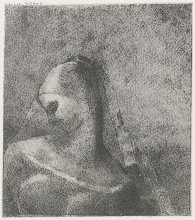| In part two of this series I pointed out that some scholars view the presence of so many inconsistencies in the Paulines as due to insertions made to the letters by someone other than their original author. In line with this possibility, I have so far been examining one particular scenario based on certain peculiarities in the early record that seem to conflate Paul with Simon of Samaria.
My hypothesis is that the Paul who wrote the original letters was the first-century Simon of Samaria and that the inconsistencies were caused by insertions to his text by a second-century proto-orthodox redactor. In this scenario the redactor’s aim would have been to turn Simon/Paul into a proto-orthodox Paul and thereby co-opt his letters for proto-orthodoxy. |

If this scenario is correct . . .
Now if this scenario is correct, one would not expect to find mention of Simon’s companion Helen in the letters as they currently stand. Any clear references to her would almost certainly have been removed or rewritten by the interpolator. And not just because she was so closely associated with Simon and his teaching. The interpolator, as a member of the mid-second century proto-orthodox community, would presumably have shared its desire to limit the influence of women in ecclesiastical matters, a desire that many scholars see reflected, for example, in the following passage from 1 Corinthians:
As in all the churches of the saints, the women should keep silent in the churches. For they are not permitted to speak, but should be in submission, as the Law also says. If there is anything they desire to learn, let them ask their husbands at home. For it is shameful for a woman to speak in church. (vv. 34-35)
“These verses in chapter 14 were not written by Paul”
(Bart Ehrman, Forged pp. 244-5).
These verses are present in one place or another of chapter 14 in all extant manuscripts that possess the chapter. Nevertheless, there are zigzags that are just too jagged even for many mainstream scholars to harmonize. This is one of them. It is a zag they find too hard to reconcile with other zigs like 1 Cor. 11:5. And it “interrupts the flow of the argument.” Its verses “seem to intrude in the passage.” So it is generally deemed acceptable to hold that “These verses in chapter 14 were not written by Paul” (Bart Ehrman, Forged pp. 244-5).
But although for one reason or another Helen’s name may not have survived the redactor’s eraser, there are Pauline passages that, in my opinion, may still contain traces of her. This post will take a look at some of them.

